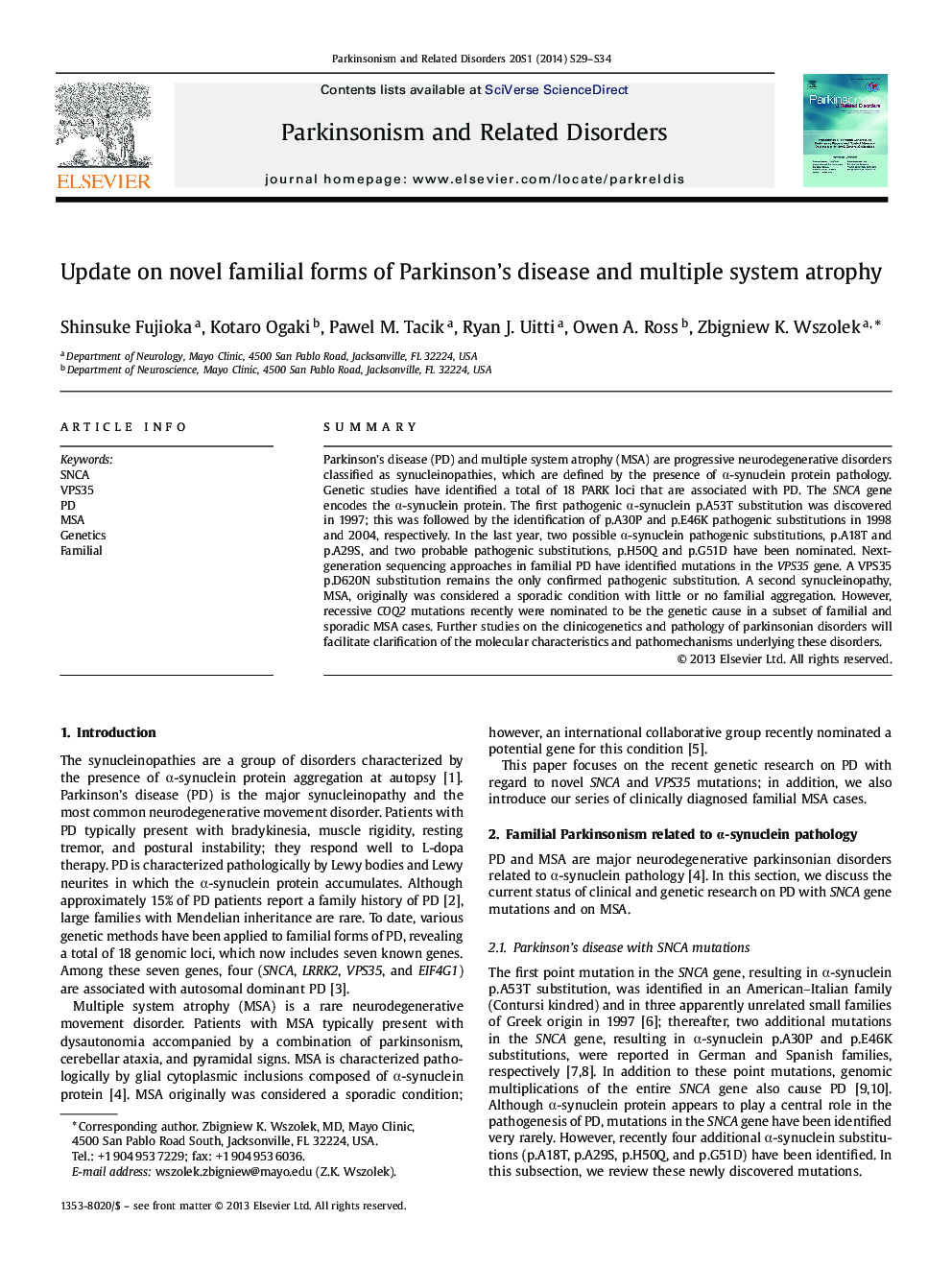| کد مقاله | کد نشریه | سال انتشار | مقاله انگلیسی | نسخه تمام متن |
|---|---|---|---|---|
| 1920587 | 1048723 | 2014 | 6 صفحه PDF | دانلود رایگان |
SummaryParkinson's disease (PD) and multiple system atrophy (MSA) are progressive neurodegenerative disorders classified as synucleinopathies, which are defined by the presence of α-synuclein protein pathology. Genetic studies have identified a total of 18 PARK loci that are associated with PD. The SNCA gene encodes the α-synuclein protein. The first pathogenic α-synuclein p.A53T substitution was discovered in 1997; this was followed by the identification of p.A30P and p.E46K pathogenic substitutions in 1998 and 2004, respectively. In the last year, two possible α-synuclein pathogenic substitutions, p.A18T and p.A29S, and two probable pathogenic substitutions, p.H50Q and p.G51D have been nominated. Next-generation sequencing approaches in familial PD have identified mutations in the VPS35 gene. A VPS35 p.D620N substitution remains the only confirmed pathogenic substitution. A second synucleinopathy, MSA, originally was considered a sporadic condition with little or no familial aggregation. However, recessive COQ2 mutations recently were nominated to be the genetic cause in a subset of familial and sporadic MSA cases. Further studies on the clinicogenetics and pathology of parkinsonian disorders will facilitate clarification of the molecular characteristics and pathomechanisms underlying these disorders.
Journal: Parkinsonism & Related Disorders - Volume 20, Supplement 1, January 2014, Pages S29–S34
